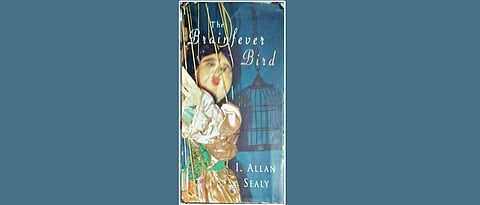

An exquisite love story, I Allan Sealy’s The Brainfever Bird moves between the Red City and White City
First, did you know that the common hawk-cuckoo gets its name ‘brainfever bird’ because its repetitive call is three notes long and sung louder each time? No? Well it’s like this — Ghee chapati ka gee chapati ka gee chapati ka gee!
A shy bird, furtive in speckled fatigues with a call that climbs and climbs maddeningly through the hot June afternoon and the burning nights: brainfever! brainfever! brainfever! Higher and higher till the crazed listener sits down and prepares a noose that could be either for the bird or for himself. From ancient times, it’s the bird of love. In Hindi it calls: Pee-kahan? Pee-kahan? Pee-kahan? Where is my love? Where is my love?
I Allan Sealy’s exquisite love story, The Brainfever Bird, first published in 2003, is set largely in Old Delhi, or Shahjahanabad, the city built by Mughal Emperor Shah Jehan. The principal buildings, fort, mosque and palace and the city gates are faced with sandstone and below it flows river Jamuna, “a shrunken much molested stream. In summer the river boils and you may cook on the city’s red stone.”
There is also reference to the White City called Sankt Petersburk after its founder, the Tsar, Peter the Great and more properly after his patron saint. Founded in 1703, hardly 50 years after Shahjahanabad, “it was deliberately occidental, Asiatic Russia’s window to Europe.”
St Petersburg sits on a delta of the river Neva as it flows out into the Baltic Sea and in winter the canals are covered in ice and the White City glitters like a “stranded iceberg in moonlight.” Lev, a biological scientist, who has been reduced to a consular chauffeur after the collapse of Communism in Russia, comes to India in search of work and we learn that he is actively hunting, hoping for a deal in trade of biological weapons.
He lands in Old Delhi and falls in love with Maya, the puppet maker who lives alone with her puppets, a wild character and weird to her neighbours. A woman who has had been educated abroad, and is a kleptomaniac. She is an eccentric, radical and intensely passionate person with whom Morgan, a news reader with an interest in all things Russian, is in love.
Maya is the neighbour of Laiq, a barber and a masseur who also dispenses herbs, electuaries and Yunani medicine to cure flatulence and treated gout or banish melancholy. Laiq is the owner of the ‘brainfever bird’ and lives below Maya’s flat in the walled city.
The flat has a room where Maya keeps her puppets hidden, preparing them for performances, dressing them with the textile scraps and offcuts she’s collected from tailors and cloth merchants in Chandni Chowk, the china beads, bicycle bells and bottle caps from the kabadi bazaar. In this room, she makes her puppets — a family of giants, some traditional ones, a courtesan, the wily minister, the resourceful princess, a tiger with a swivel tail, who hangs besides a crocodile with Styrofoam teeth, a quilted horse, a snake sprung on six dead electric heater coils.
Sealy’s prose is wonderfully descriptive and reels you like a puppeteer into disparate world of reality and fantasy. Lev, the Russian, is robbed of his briefcase containing important documents as soon as he lands in Delhi. As he, a married man with a wife and son back in St Petersburg, there is an unfurling of events that is beyond his control, just like being a puppet whose strings are controlled by someone else. There is a glimpse of the underworld and the love triangle with Morgan reaching Russia and an unfortunate turn of events.
There are stories within stories in this book. There is the story of Razia Sultana, the empresses of Delhi Sultanate whose tomb lies near Turkman Gate in Old Delhi. A skilled warrior, she could ride both horses and elephants and was a trained martial artist. Maya the illusionist puts up a puppet show inside Dilli that narrates the story of Razia. The descriptive narration reveals the prowess of Sealy as a master wordsmith with a distinct technique. The thought that is left lingering is found in Sealy’s prologue. In which he ponders, ‘What if you yourself were a puppet?’ Go read!
